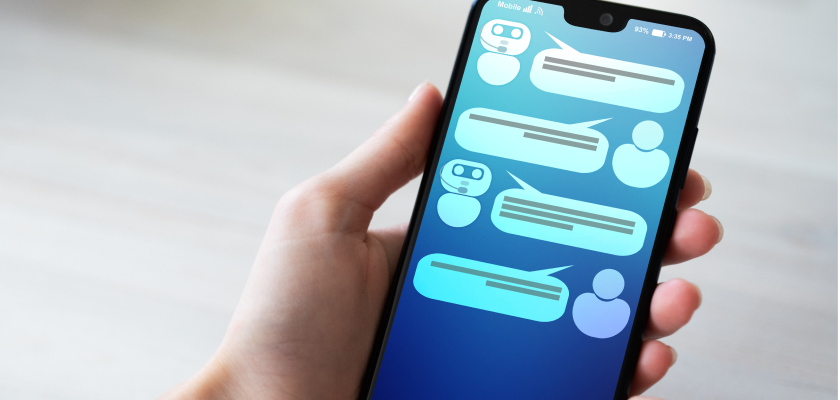Top UI/UX Trends for Medical Device Design
Medical equipment companies are experiencing a significant paradigm change. Medical equipment is compared to cell phones, VR headsets, and other electronics; it is expected to provide a pleasant and engaging user experience. It is not enough for the medical...

Medical equipment companies are experiencing a significant paradigm change.
Medical equipment is compared to cell phones, VR headsets, and other electronics; it is expected to provide a pleasant and engaging user experience. It is not enough for the medical device user interface to look sleek and modern; every part of the interface must be fine-tuned to enhance use and safety. The expectations are high, and developers of medical devices should go the extra mile to deliver a quality and popular product.
Trends in Medical Device Design Today
In order to stay competitive and meet customer demands, it is critically important for medical device developers to stay tuned and follow all design and IT trends. After all, you need to provide a decent product to your customers that is better than your rivals have to offer. At Fuselab Creative, professional designers understand what it takes to develop a medical solution that enables speed, understanding, and accuracy. The journey to addressing customer needs is not always smooth, but with the right approach, you can reach your target.
Medical device makers are keen to match consumer expectations by adding new features and enhancing UI UX design for medical devices, which are at an all-time high. Let’s check the key trends that can help medical device makers build experiences that meet customer expectations and demands.
Interactive Virtual Reality
Virtual Reality (VR) enables users to experience real-world events in a virtual setting. Immersive, interactive, and simulated settings are ideal for teaching and learning. A doctor, for example, may use VR training exercises to prepare for a complex surgery. Aside from instructional and surgical planning uses, VR may stimulate patients’ mental and physiological processes. The technology is becoming increasingly widespread in university research and hospital settings as medical equipment makers uncover more use cases.
Skeuomorphic Design
Improving medical device user interfaces has been a priority for many years, with a particular emphasis on relying on identifiable visual signals to improve the user experience. A stethoscope icon, for example, may substitute the words “heart rate” on a medical gadget panel.
One of the key advantages of such visual signals is that they enable language-independent designs. Text-based designs may need to translate the word “heart rate” into many languages for different users. Whether the patient speaks Spanish, English, or Chinese, a symbol of a stethoscope or an EKG reading is evident.
Choosing a skeuomorphic design is one of the most popular UX trends in healthcare today since it creates visually attractive interfaces. Skeuomorphic design, on the other hand, isn’t always the solution. In certain cases, a flat design is still preferable:
For non-critical and secondary controls; When the gadget has just one or two buttons; When on-screen hints assist users in distinguishing interactive buttons from static text.Skeuomorphic design elements such as drop shadows and subtle gradients may enhance the look of controls. However, overdoing it might harm aesthetics and usage.
Interactive Chatbots
Interactive chatbots make it easier for patients to get information and assistance. Patients benefit from self-service when routine questions are answered quickly. People prefer interactive healthcare UI software, and chatbots provide a simulation of the human aspect. Employees may concentrate on work that requires human interaction when chatbots perform tedious and repetitive tasks.

Voice Interface
Voice interfaces are becoming increasingly helpful, whether on your phone, at home, or, more recently, in medical equipment. Voice interfaces, like interactive chatbots, provide patients and healthcare workers with another method to quickly and simply access information.
Hands-free usage is particularly beneficial for patients who may not be able to fully utilize their hands. Voice interfaces enable these sufferers to use application functionality without assistance. Similarly, healthcare workers may operate technology via speech interfaces without having to put down their scalpels, needles, or forceps.
Customizable mHealth Apps
Mobile health applications are yet another option to improve information and functionality accessibility. Patients may utilize mHealth applications to manage their healthcare from almost any location. Customizable applications improve the user experience. All in all, mHealth applications boost patient involvement in a variety of ways:
Sending appointment reminders and permitting adjustments; Providing drug recommendations or other resource updates; Offering different notifications and other feature customization; Allowing to track metrics of health and fitness on a mobile device; Providing telemedicine video chat features.The ability to customize mHealth applications makes them simpler to use and comprehend.
Make UX Design Work for the Benefit of Medical Devices
As technology becomes increasingly integrated into the medical environment, it is critically important to ensure that multi-generational and multi-disciplinary experts as well as ordinary patients can use medical devices properly. And this is where top UX/UI design trends will come to the rescue. So instead of making some random product development decisions, follow the best practices and trends to ensure a wider reach of your product.
The design trends that we have shared with you are linked together as components of a user-centric design philosophy. Similarly, every function of a medical device is expected to provide a consistent user experience, leading to a smooth customer journey.

 Troov
Troov 
































